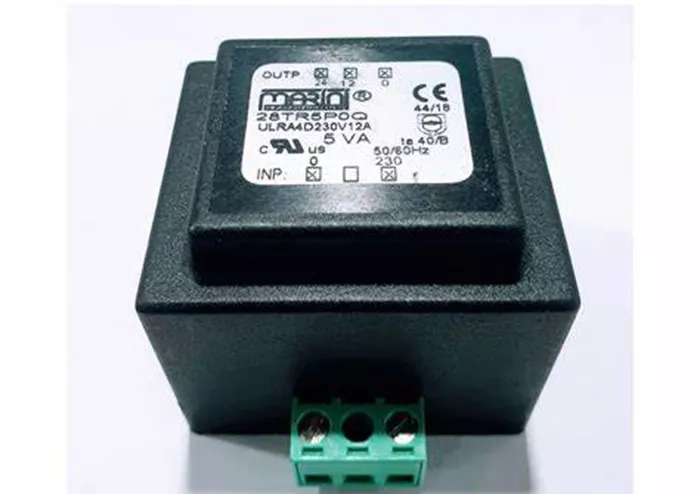A 24V transformer is a type of electrical device that plays a crucial role in converting voltage levels to meet specific requirements in various applications. Understanding how it works involves delving into the principles of electromagnetic induction and the design of transformers. This article will explore the working mechanism of a 24V transformer, its components, and its applications in detail.
Fundamental Principles of Transformers
Transformers operate on the principle of electromagnetic induction, a phenomenon discovered by Michael Faraday in the early 19th century. The core idea is that a changing magnetic field can induce an electromotive force (EMF) in a nearby conductor. In the context of transformers, this principle is used to transfer electrical energy between two coils—primary and secondary—linked by a magnetic core.
Electromagnetic Induction
When an alternating current (AC) flows through the primary coil of a transformer, it generates a magnetic field around it. This magnetic field changes continuously as the AC current alternates. According to Faraday’s law of electromagnetic induction, this changing magnetic field induces an EMF in the secondary coil. The induced EMF in the secondary coil generates a voltage across its terminals, which can be used to power various devices.
Components of a 24V Transformer
Primary Coil
The primary coil is connected to the input voltage source. When an AC voltage is applied to this coil, it generates a magnetic field that fluctuates with the alternating current. The primary coil is typically wound around a ferromagnetic core to enhance the efficiency of magnetic flux transfer.
Secondary Coil
The secondary coil is adjacent to the primary coil and is connected to the load that requires the 24V power supply. As the magnetic field from the primary coil fluctuates, it induces an EMF in the secondary coil, generating the desired 24V output. The number of turns in the secondary coil is carefully calculated to achieve the required voltage transformation.
Magnetic Core
The magnetic core is a crucial component of the transformer, typically made of ferromagnetic materials like iron. The core serves to concentrate the magnetic flux generated by the primary coil, enhancing the efficiency of energy transfer between the primary and secondary coils. The core is often laminated to reduce eddy current losses, which can cause energy loss in the form of heat.
Operation of a 24V Transformer
Input Voltage Application
When an AC voltage is applied to the primary coil of a 24V transformer, it generates a constantly changing magnetic field around the coil due to the alternating nature of the current. This magnetic field is crucial for the operation of the transformer, as it induces an EMF in the secondary coil.
Magnetic Field Induction
The fluctuating magnetic field produced by the primary coil induces a varying EMF in the secondary coil according to Faraday’s law of electromagnetic induction. The induced EMF in the secondary coil results in a voltage across its terminals, which can be used to power devices requiring 24V.
Voltage Transformation
The voltage transformation process in a 24V transformer is determined by the turns ratio of the primary and secondary coils. The secondary coil is designed to produce a voltage of 24 volts, making it suitable for various applications that require this specific voltage level. The efficiency of the transformer is influenced by the design of the coils and the magnetic core.
Load Connection
The secondary coil of the 24V transformer is connected to the load, such as a device or a circuit that requires a 24V power supply. The transformer ensures that electrical power is efficiently transferred from the primary to the secondary coil with minimal loss, providing a stable and reliable power source for the connected load.
Efficiency and Power Loss
While transformers are highly efficient devices, they are not entirely free from power losses. Several factors contribute to these losses, including:
Eddy Currents
Eddy currents are circulating currents induced in the magnetic core due to the changing magnetic field. These currents can cause energy loss in the form of heat. To mitigate eddy current losses, transformer cores are often laminated or constructed using materials with high electrical resistance.
Hysteresis Losses
Hysteres is refers to the lagging of magnetic induction behind the applied magnetic field. As the magnetic core undergoes repeated cycles of magnetization and demagnetization, energy is lost in the form of heat. This loss is minimized by using high-quality ferromagnetic materials in the core construction.
Applications of 24V Transformers
The versatility of 24V transformers makes them indispensable in various applications across different industries:
Industrial Machinery
24V transformers power control circuits and sensors in industrial machinery, providing a stable voltage source for proper operation. They are essential for ensuring that industrial processes run smoothly and efficiently.
HVAC Systems
Heating, Ventilation, and Air Conditioning (HVAC) systems often incorporate 24V transformers to supply power to control circuits and sensors. These transformers ensure that the HVAC systems operate reliably, maintaining comfortable indoor environments.
Residential Doorbell Systems
Doorbell systems commonly use 24V transformers to power the doorbell chime and enable communication between the doorbell and the internal unit. These transformers provide a safe and efficient power source for residential doorbell systems.
Automation and Control Systems
In home automation and control systems, 24V transformers are employed to power smart devices, sensors, and actuators. They enable the seamless operation of automated systems, enhancing convenience and efficiency in residential and commercial settings.
Conclusion
In conclusion, the operation of a 24V transformer is rooted in the fundamental principles of electromagnetic induction. Through the careful design of primary and secondary coils, coupled with an efficient magnetic core, these transformers enable the seamless transfer of electrical energy while maintaining a stable voltage output. As essential components in various applications, 24V transformers exemplify the marriage of theoretical physics and practical engineering, showcasing the ingenuity that drives the evolution of electrical systems. Whether in industrial machinery, HVAC systems, or residential applications, 24V transformers play a crucial role in ensuring reliable and efficient power delivery.
Related Topics:

